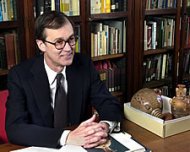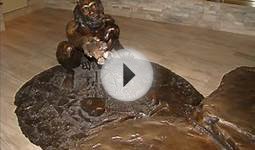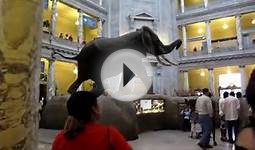American Museum of Natural History Washington DC

RESEARCH
Dr. Morris uses his expertise in South American archaeology to research the political and economic achievements of the Inkas, the largest and most influential native empire in the Americas.
The Inka empire expanded rapidly from its base as a small, early 15th-century regional state with its capital at Cuzco. By the time Spanish conquerors arrived in 1532, the empire controlled all of the highland and coastal area of what is now Peru, highland Ecuador and Bolivia, Chile to the south of Santiago, and much of northwest Argentina. In barely a century it had come to dominate more than 12 million people who spoke dozens of different languages and a vast territory that ranged from dry coastal deserts to warm irrigated valleys to high Andean peaks.
Besides its great agricultural wealth, the empire produced some of the world's finest textiles and had an advanced metallurgy. The Spanish melted down most of the incredible Inka treasure of metal objects. Economists have credited the enormous influx of gold and silver into the coinage of Europe as one of the major stimulants of economic growth in the 16th and 17th centuries.
During the 1970s and '80s, Dr. Morris led several expeditions to Huanuco Pampa, one of the Inkas' largest cities. This work, which entailed excavating more than 300 of the site's almost 4, 000 buildings at a height of 12, 000 feet in the Peruvian Andes, produced discoveries that transformed world understanding of Inka urban life. During the 1990s, Dr. Morris extended his research on Inka political and economic strategies to include the Peruvian coast and the Bolivian highlands.
Currently, Dr. Morris is conducting an architectural research and excavation project at the Inka center of Tambo Colorado in the Pisco Valley. He is using data from the excavations, the site's architecture, and the Spanish written sources to explore Inka imperial strategies on the south-central coast of Peru.
Recent Significant Publications
Morris, C. "The Transformation of the Chincha Capital." In Variations in the Expression of Inka Power, ed. R. Burger, C. Morris, and R. Matos. Washington, D.C.: Dunbarton Oaks (in press/2002).
Morris, C. "Enclosures of Power: Multiple Spaces of Inka Administrative Palaces." In Ancient Palaces of the New World: Form, Function and Meaning, ed. S. T. Evans and J. Pillsbury. Washington, D.C.: Dunbarton Oaks (in press/2002).
Morris, C., and M. Rostworowski. "The Fourfold Domain: Inka Power and Its Social Foundations." In The Cambridge History of the Native Peoples of the Americas, Volume III: South America, Part 1, ed. F. Salomon and S. B. Schwartz, 769-863. Cambridge: Cambridge University Press, 1999.
Morris, C. "Inka Strategies of Incorporation and Governance." In Archaic States, ed. G. M. Feinman and J. Marcus, 293-309. Santa Fe, New Mexico: School of American Research Press, 1998.
Von Hagen, A., and C. Morris. The Cities of the Ancient Andes. London and New York: Thames and Hudson, 1998.
Morris, C., and A. von Hagen. The Inka Empire and Its Andean Origins. New York: Abbeville Press, 1993.
Morris, C. "The Wealth of a Native American State: Value, Investment, and Mobilization in the Inka Economy." In Configurations of Power: Holistic Anthropology in Theory and Practice, ed. J. Henderson and P. Netherly, 36-50. Ithaca, New York: Cornell University Press, 1993.
You might also like






